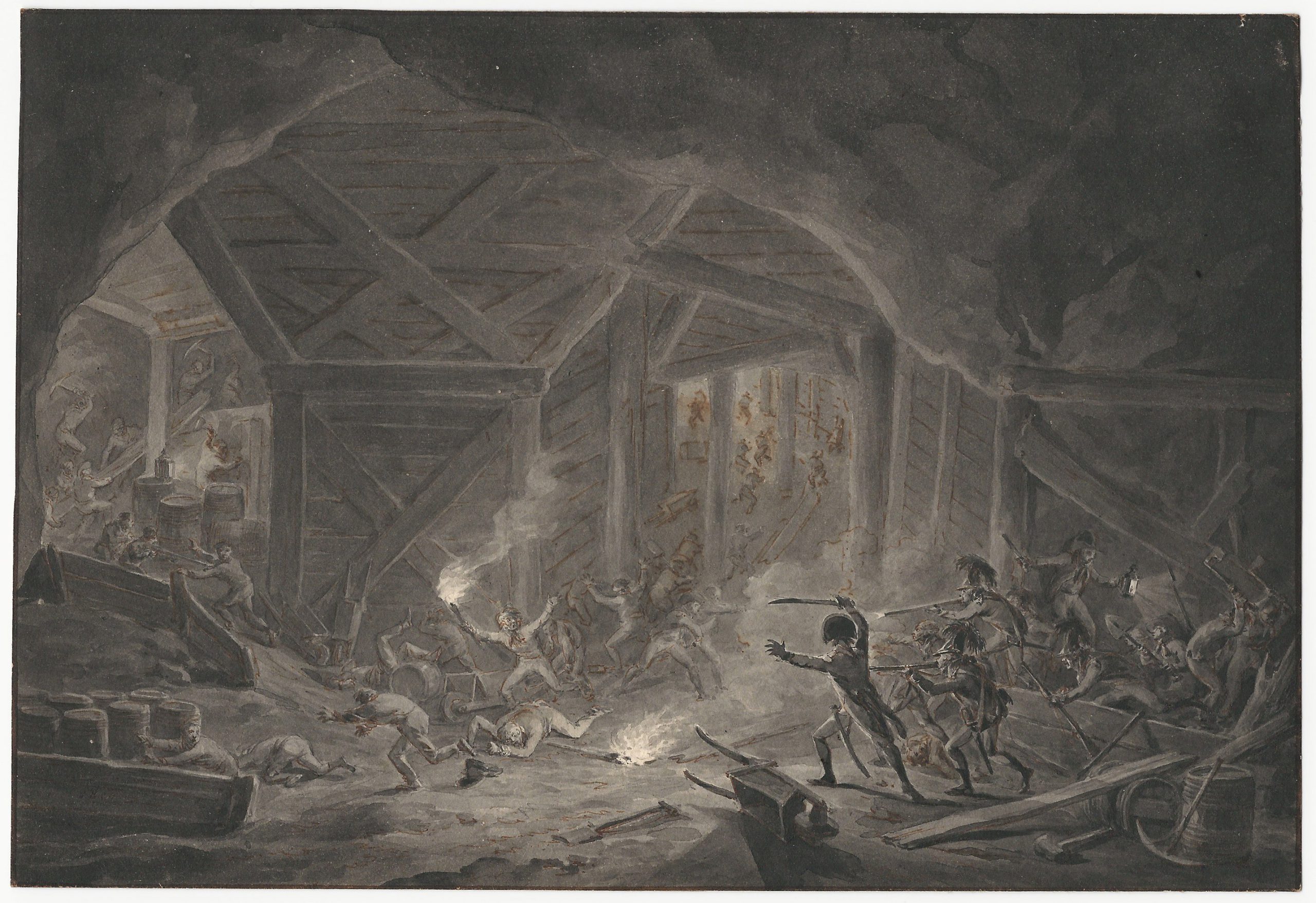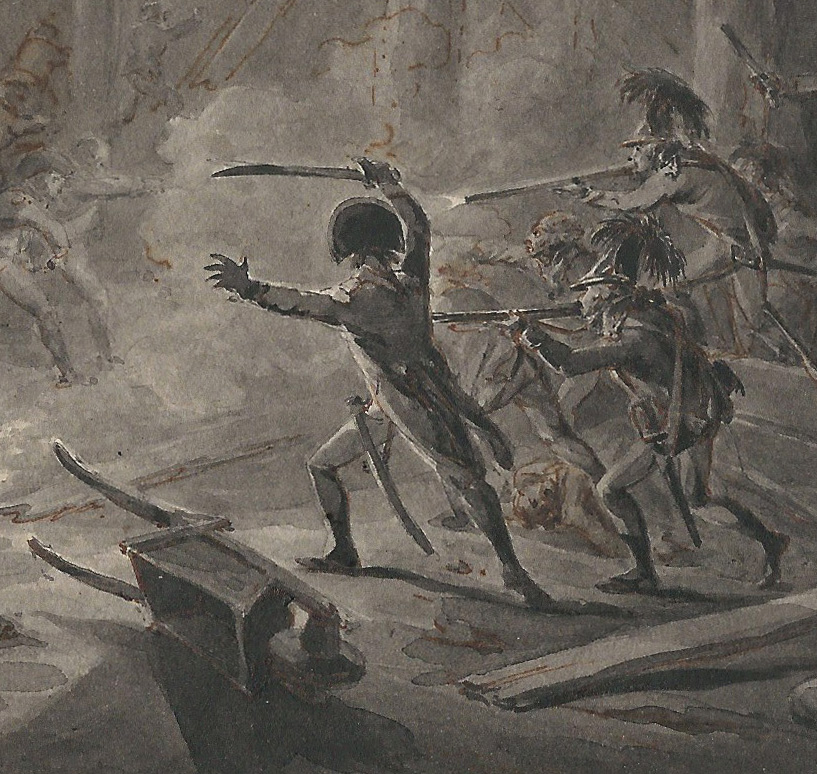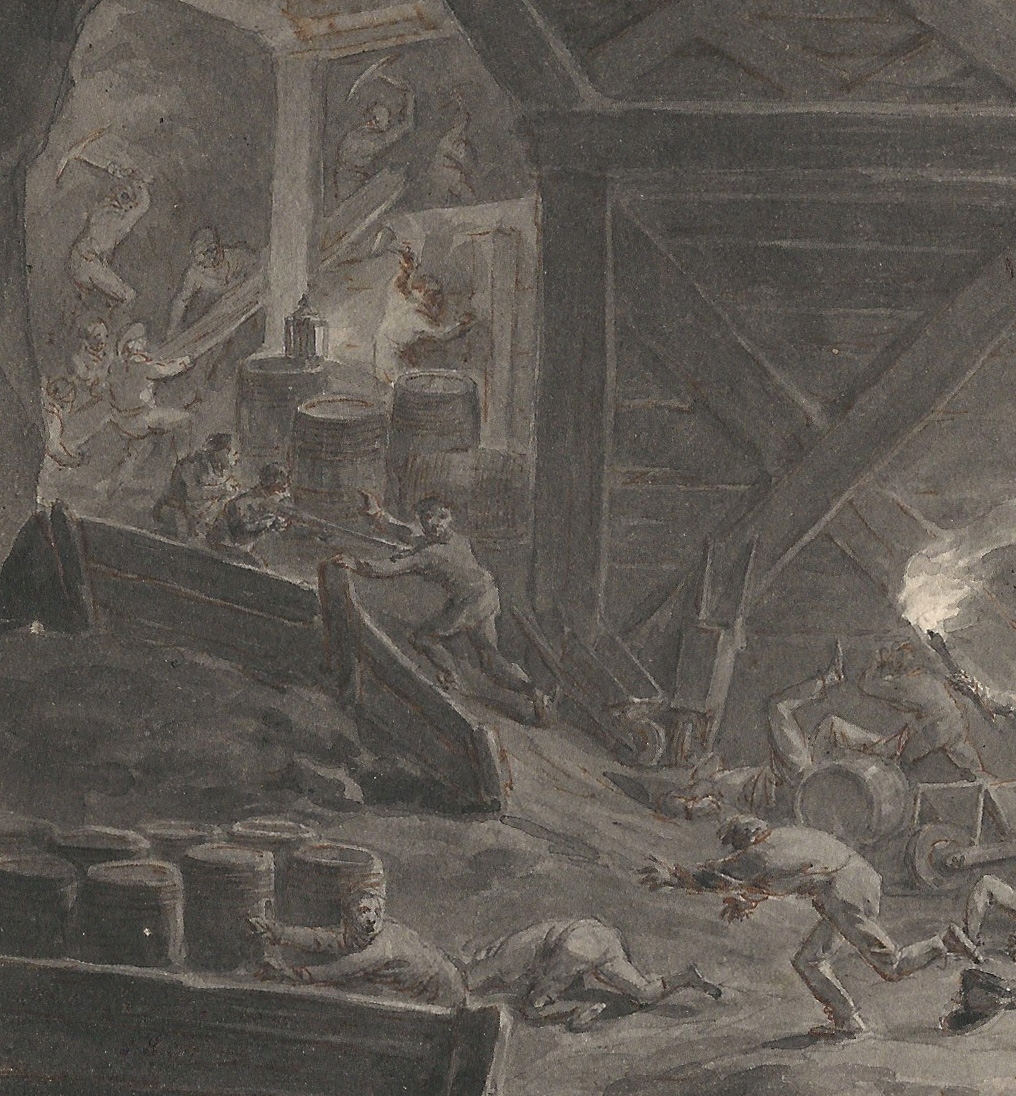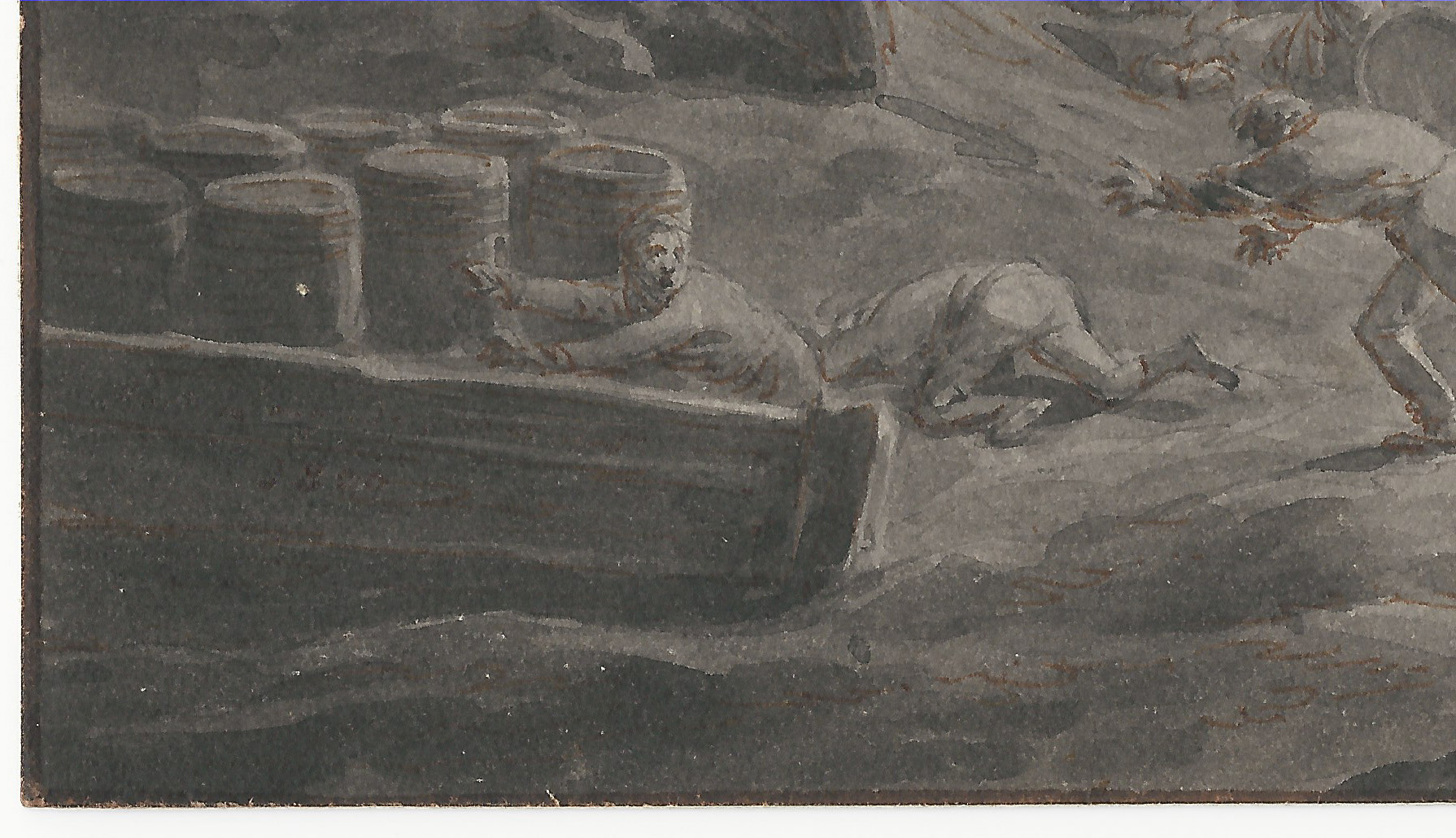DIRK LANGENDIJK (Rotterdam 1748 – 1805 Rotterdam)
Dirk Langendijk (Rotterdam 1748 – 1805 Rotterdam)
A Military Engagement in the Caves of the Sint Pietersberg in Maastricht
Pen and brown ink, grey wash, black ink framing lines, on wove paper, 162 x 238 mm (6.4 x 9.4 inch)
Signed and dated ‘Dirk Langendijk fecit / 1800’ (lower left, graphite)
Provenance
Private collection, France
***
Dirk Langendijk was a pupil of Dirck Anthonie Bisschop, an interior decorator and a painter of coats of arms and coaches.1 From the beginning of his career Langendijk depicted primarily military scenes. As his career progressed he drew inspiration for these military scenes from the Dutch conflict between the Patriots and the Orangists, and from the invasions of the Dutch Republic by the French and Anglo-Russian armies in 1795 and 1799 respectively. Langendijk’s style is characterised by a concentration on crowds rather than individuals, which makes the present work a rarity in his oeuvre. In his military scenes, we typically see the interaction between groups of officers and soldiers before and during battle. However, as well as military scenes, Langendijk also depicted many scenes of coastal life, such as the Courtauld Gallery’s Shipping in a Storm off the Coast. He executed many of his works without pencil and pen, often just drawing with a brush.
Langendijk was primarily a draughtsman and he was greatly admired in his lifetime, particularly for his detailed rendering of equestrian combat scenes. He was also, to a lesser extent, a painter and etcher, although dated paintings by him are only known from the period of 1771 to 1772 and from 1780. These generally depict the daily life of soldiers and landed gentry.
I am very grateful to Dr Louis Sloos of the Nationaal Militair Museum in Soest for identifying this scene in rather mysterious surroundings as a military engagement during the Siege of Maastricht in 1794.2 The town in the Dutch province of Limburg was besieged by the invading French armies of Napoleon, and various engagements took place in the caves of the Sint Pietersberg, which held strategic importance because of the fortress that was situated on its northern flank.3 Marl from the Sint Pietersberg had been mined for centuries, which created a vast network of underground tunnels and caves. The French had obtained a primitive map of the cave network and devised a plan to set off explosives underneath the fortress, which may be related to the subject depicted in this finished drawing by Langendijk, only executed a few years later. Langendijk may have based this finished work on observations recorded by himself, or from written or other sources.
SOLD TO BROWN UNIVERSITY LIBRARY (ANNE S.K. BROWN MILITARY COLLECTION), USA
1. For the artist, see H.C. Hazewinkel, ‘Dirk en Jan Anthonie Langendijk en Christoffel Meijer’, Rotterdams Jaarboekje 3 (1955), pp. 121-142 and M. Menalda, ‘Dirk Langendijk (1748-1805): tekenaar in woelige tijden’, Teylers Magazijn 11 (1993), no. 1 (no. 38), pp. 1-5.
2. In an email of 11 December 2018, in which Dr Sloos offers this likely identification.
3. https://www.maastrichtunderground.nl/upload/Grotten%20Noord%20Digi%20NL.pdf



